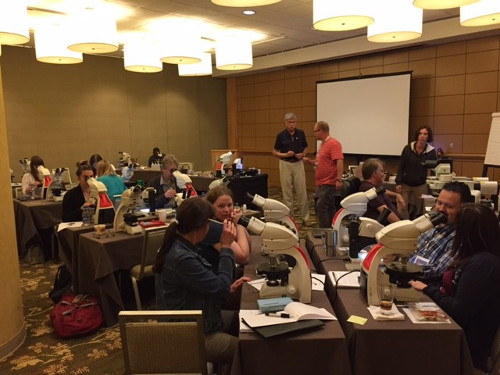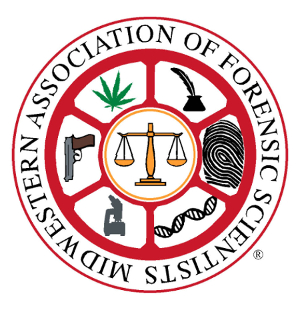Skip Palenik Guides MAFS Workshop to Uncover “What’s in that Dust?”
On Wednesday, 20 September 2017, Microtrace senior research microscopist Skip Palenik presented a full day workshop at the Midwestern Association of Forensic Scientists‘ (MAFS) 46th Annual Fall Meeting in Cincinnati, OH. This year’s conference was a combined meeting amongst MAFS, the Southern Association of Forensic Scientists (SAFS), and the American Society of Trace Evidence Examiners (ASTEE).
In the workshop, entitled “What’s in that dust?,” Skip guided attendees through a practical introduction to the identification and contextualization of dust components by microscopy and microchemistry. Beginning with lecture-demonstrations and moving quickly to practical laboratory sessions, students learned techniques to support every aspect of a dust investigation from collection and analysis to interpretation.
Abstract
To Edmond Locard, the terms dust and trace evidence both amounted to much the same thing and the great German chemist Liebig referred to dust as “matter in the wrong place.” The purpose of this class is to provide a practical introduction to the identification of the components of dust by means of microscopy and microchemistry, as well as to the principles by which the information obtained may be interpreted.
After a general introduction to the topic, the workshop will be conducted by means of lecture-demonstrations followed by practical laboratory sessions, in which the attendees will have the opportunity to examine a variety of dusts, including those which they themselves bring with them.
The manner in which a dust sample has been collected has an important bearing on the techniques used to examine it. Dust may be received as a loose powder, from vacuuming, as scrapings, adhering to adhesive tape, as smears, on cotton swabs and cloth wipes to name just some of the most commonly encountered substrates. The methods of working with some of these substrates will be demonstrated and students will have the opportunity to try some of them, if they wish to avail themselves of the opportunity.
Some of the particles and substances which frequently comprise dust and that can be identified on the basis of their microscopic morphology, optical crystallographic properties, fluorescence characteristics and chemical and physical properties will be illustrated and explained through the microscope by projection. Particles that require specialized analytical instrumentation for certain identification will be pointed out when encountered and the techniques of dealing with them will be described, specifically with respect to types of information that may be obtained from them.
Students will then try their hand at examining both known and “questioned” dusts from substrates of their own choosing while being coached in their observations and as to the types of tests that might be applied to identify unknown particles with the available resources. Most importantly, it is hoped to demonstrate that useful, demonstrable results are obtained, not just by going through the motions, but of thinking critically as the examination proceeds by building up a mental image of an environment as each component is identified.
MAFS
The Midwestern Association of Forensic Scientists (MAFS) was founded in 1971 as a non-profit organization where scientists from the Midwest could gather and discuss unique cases or research to help further the field and solve problems within the disciplines. Over the years, MAFS has grown to include participants from all over the U.S. and even some from outside the U.S.; however, the original goal of the organization has not changed. Annual fall meetings and spring workshops are held to provide opportunities for scientists to advance their expertise and share their knowledge with others. A visiting scientist program is available to aid laboratories with specific training needs. University students are encouraged to join the organization and present relevant research that may impact the field. MAFS purpose is to encourage the exchange of ideas and information within forensic science as is exemplified through the mission statement “To further the field of forensic science by leading to inspire and inspiring to learn.”
How May We Help You?
Contact usto discuss your project in more detail.









